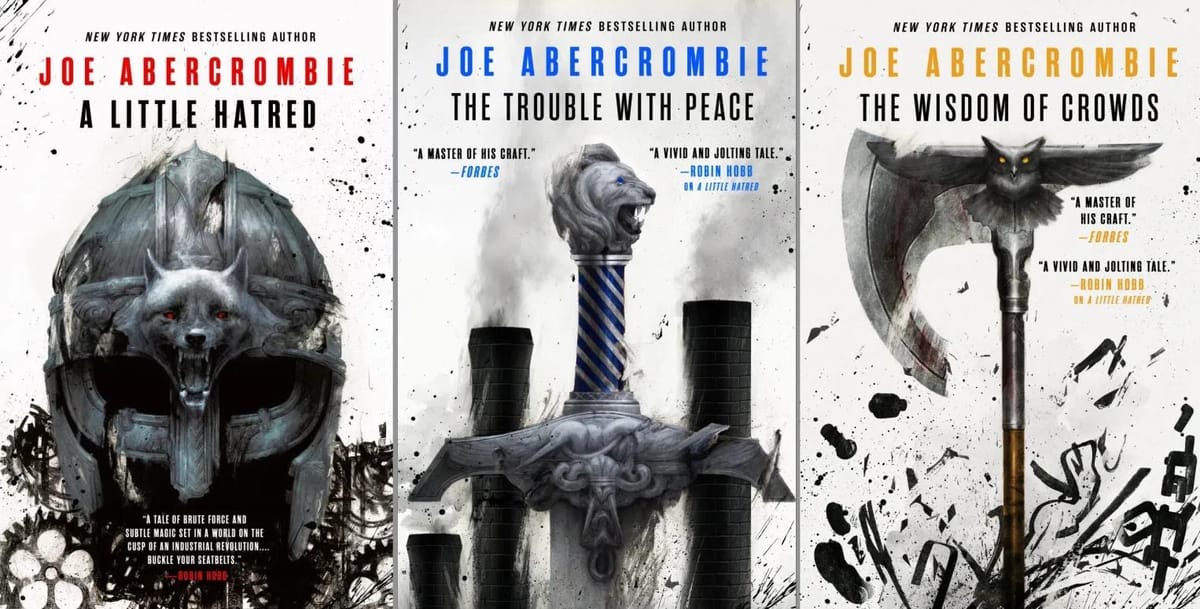Joe Abercrombie has become a household name in fantasy, rivaling the likes of Brandon Sanderson, George R. R. Martin, and Robin Hobb. His style of grimdark fantasy is uniquely his own. If you pick up one of his books, you know for a fact that you’re reading an Abercrombie book. His prose is beautifully dark, the action cinematically brutal, and the humor twisted.
The Age of Madness is his second trilogy set in the world of The First Law, following the generation after the characters from the first trilogy. In the times of Euz and his sons, magic was the highest symbol of power, but the world has progressed since then, and magic continues to fade. The world is heading into an industrial revolution. Lands are being taken over by factories and mills, while Gurkish powder has quickly been utilized in battle. Ideas of invention and innovation have spread among the idealists. But just because the world has progressed, does that make it a better place? Relations between the Union and the North remain fraught with war and conflict. The people are becoming more disillusioned with the Union’s authority. Poverty has reached an all-time high, while the rich profit off the working class’s labor.
This trilogy is perhaps the best Abercrombie has ever written. Ignoring my own feelings about the story, I think it surpasses the first trilogy. My reason is the improvement in his prose, plot, humor, and female cast. Two things that are up for debate are the characters and worldbuilding. Personally, I preferred the them in the original trilogy, but I can’t objectively say that its characters were better written—especially when his portrayal of female characters is far superior in The Age of Madness. The characters in The Age of Madness also have an interesting level of compare and contrast. Two characters, in particular, serve as foils to each other, and their execution from beginning to end was masterful. I was mad at how this series ended, but in retrospect, it was genius.
Abercrombie honed his craft in writing POV through the Little People chapters. In these, he spent a short time inside the minds of side characters. One standout occurs during a riot, where we see people’s mindsets, dreams, goals, aspirations, and emotions as chaos unfolds around them. It gives you an idea of what the regular people are thinking as the main cast goes about being the stars of the story.
If you liked Abercrombie’s cynical take on humanity in The First Law, you’ll likely appreciate it even more here. If you didn’t, this might not be for you, as the cynicism has been cranked up even further—if that was even possible.
